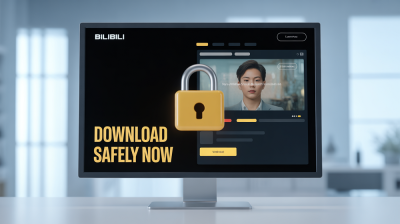LinkedIn is a powerful networking platform that connects professionals across various industries. However, to maintain the quality of interactions and prevent spam, LinkedIn has implemented connection limits. Understanding these limits is crucial for networking effectively without facing restrictions. In this post, we'll explore the ins and outs of
Understanding the Weekly Connection Request Cap
LinkedIn imposes a weekly limit on connection requests to ensure that users engage meaningfully with their network. The current limit stands at:
- 100 connection requests per week
This means you can send up to 100 requests to connect with other professionals every seven days. But why does LinkedIn have this cap? Here are a few key reasons:
- Quality over Quantity: By limiting the number of requests, LinkedIn encourages users to build genuine relationships rather than just amassing connections.
- Spam Prevention: This limit helps reduce spammy behavior, making the platform more enjoyable for everyone.
- User Engagement: Fewer requests mean users are likely to engage more meaningfully with the connections they do make.
It’s also essential to note that exceeding this limit can lead to temporary restrictions on sending connection requests. If you find yourself frequently hitting the cap, consider the following:
- Focus on quality connections rather than sending requests to anyone.
- Engage with existing connections to strengthen your network.
- Use personalized messages when sending requests, which increases the likelihood of acceptance.
By understanding and respecting the weekly connection request cap, you can enhance your networking experience on LinkedIn and foster meaningful professional relationships.
Strategies to Effectively Manage Connection Requests
Managing connection requests on LinkedIn can feel overwhelming, especially if you’re actively networking. However, having a strategy in place can simplify the process and help you stay within the weekly limits. Here are some effective strategies:
- Prioritize Quality Over Quantity: Focus on connecting with individuals who align with your professional goals. Instead of sending requests to everyone, target people in your industry, potential collaborators, or thought leaders.
- Set a Weekly Target: Decide how many connection requests you’ll send each week. Maybe it’s 10 or 15. This helps you stay within the limits while ensuring you’re making meaningful connections.
- Personalize Your Requests: Always include a personalized message when sending a connection request. This increases the likelihood of acceptance and makes your outreach more genuine. For example, mention a common interest or refer to a recent post they made.
- Review and Clean Up Your Network: Regularly assess your current connections. If you find inactive profiles or connections that no longer serve your goals, consider removing them. This frees up space for new, valuable connections.
- Use LinkedIn Groups: Engage in groups that align with your interests. This not only allows you to connect with like-minded professionals but also provides a platform for deeper interactions.
Tips for Building Meaningful Connections
Building meaningful connections on LinkedIn goes beyond just sending requests. It’s about nurturing those relationships over time. Here are some tips to help you create solid connections:
- Engage with Content: Don’t just scroll through your feed; actively engage with posts by commenting and sharing insights. This not only showcases your expertise but also keeps you on the radar of your connections.
- Follow Up: After connecting, send a follow-up message thanking them for accepting your request. Reference any mutual interests or connections to keep the conversation flowing.
- Schedule Informational Interviews: For connections you wish to learn more from, suggest a virtual coffee chat. This opens up opportunities for deeper discussions and knowledge sharing.
- Be Consistent: Regularly check in with your connections. Share articles, congratulate them on their achievements, or simply ask how they’re doing. Consistency builds trust and rapport.
- Offer Value: Think of ways you can help your connections. Whether it’s sharing resources, offering insights, or connecting them with others, being a valuable resource strengthens your professional ties.
5. Consequences of Exceeding Connection Limits
When it comes to building your professional network on LinkedIn, understanding the platform's connection limits is crucial. Exceeding these limits can lead to several significant consequences that may hinder your networking efforts.
First off, if you surpass the weekly connection request limit, LinkedIn may take action against your account. This can include:
- Temporary restrictions: You might find yourself unable to send connection requests for a period, which can be frustrating if you're in the middle of a networking push.
- Account review: LinkedIn may flag your account for suspicious activity, putting it under review. This could lead to further restrictions or even result in account suspension.
- Loss of credibility: Excessive connection requests, especially to users who don't accept them, can tarnish your professional reputation. People may view you as spammy or insincere.
Moreover, if your connection requests are frequently ignored or declined, LinkedIn could lower your visibility on the platform, making it harder for you to connect with others in the future.
In summary, exceeding LinkedIn's connection limits can lead to temporary bans, account scrutiny, and a damaged reputation. To maintain a healthy presence on the platform, it's essential to stay within these limits.
6. Conclusion and Best Practices
Understanding LinkedIn's weekly connection limits is vital for anyone looking to expand their professional network effectively. By adhering to these guidelines, you not only safeguard your account but also foster genuine connections that can lead to valuable opportunities.
Here are some best practices to keep in mind:
- Quality over quantity: Focus on sending personalized connection requests to individuals you genuinely want to connect with, rather than a blanket approach.
- Engage with your network: Instead of constantly seeking new connections, engage with your existing contacts by liking, commenting, and sharing their posts. This can lead to natural connections without exhausting your limits.
- Be strategic: Plan your connection requests throughout the week instead of rushing to hit the limit. This will allow you to build relationships gradually.
- Monitor your activity: Keep track of how many requests you send each week to avoid exceeding limits unknowingly.
By following these practices, you can navigate LinkedIn’s connection limits successfully while building a robust, meaningful professional network that serves you well in the long run.










